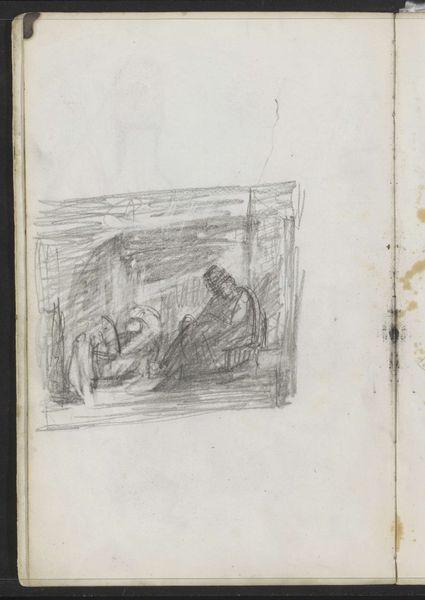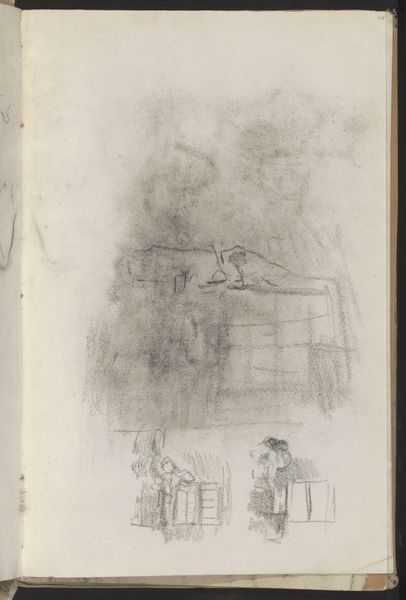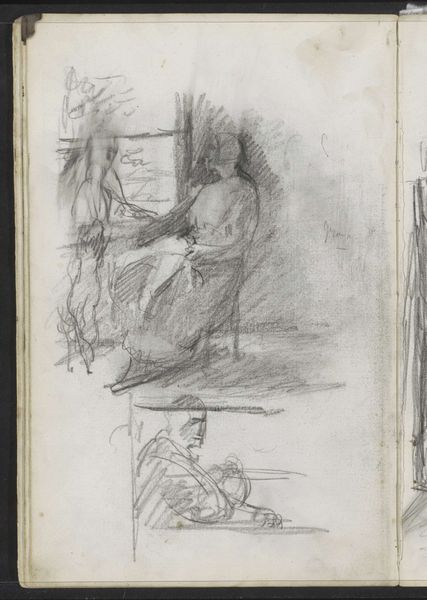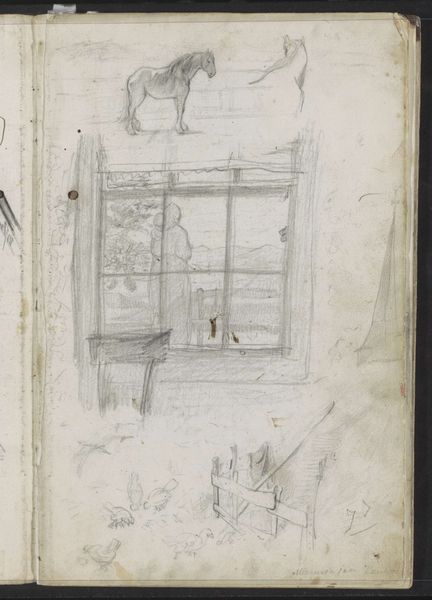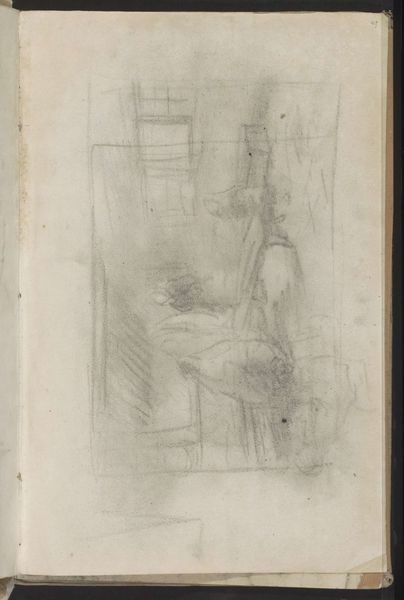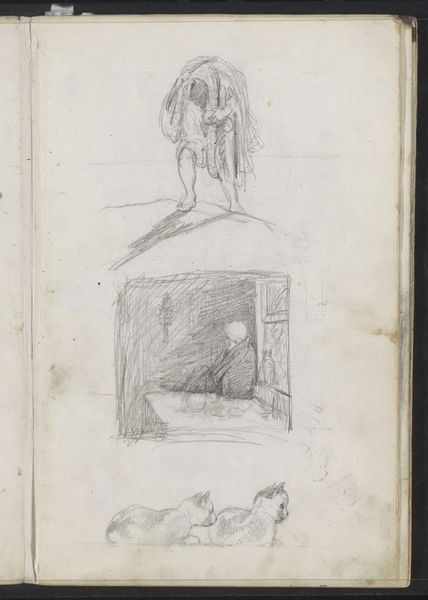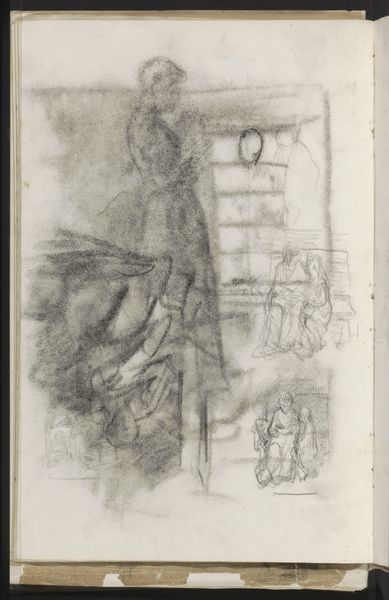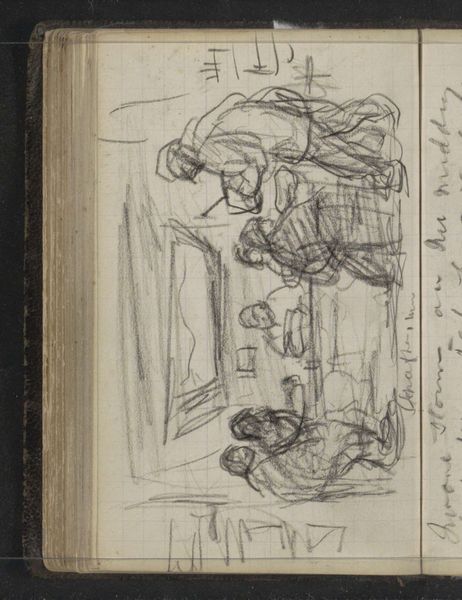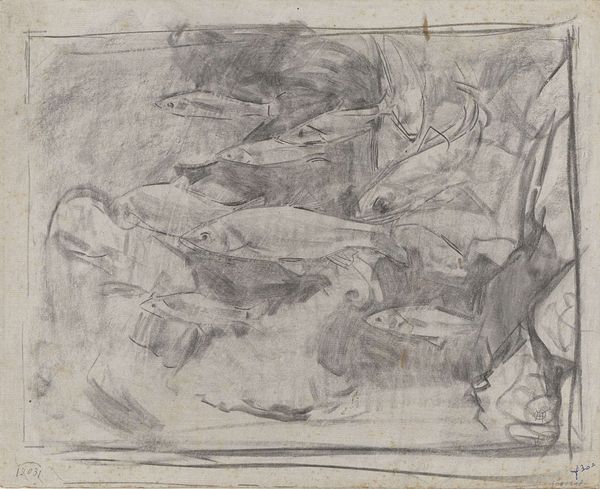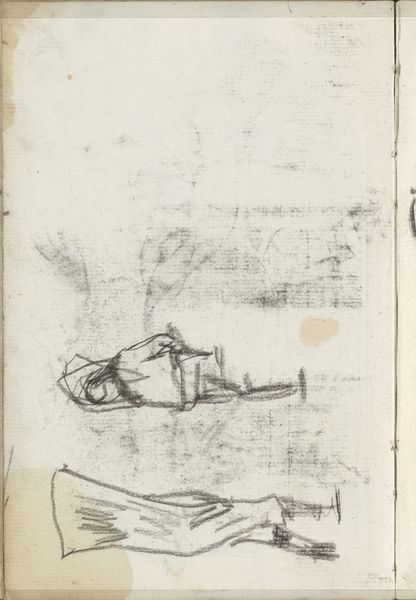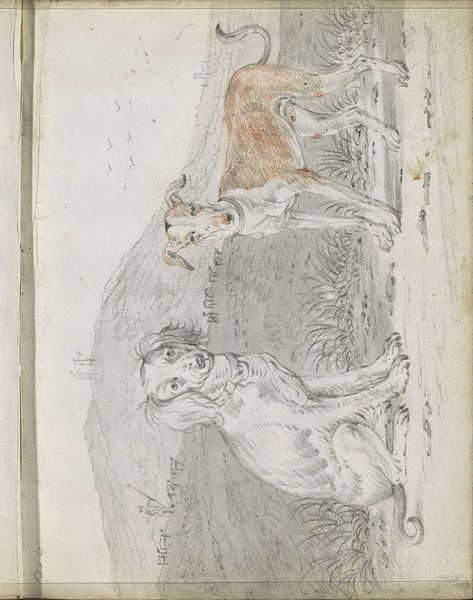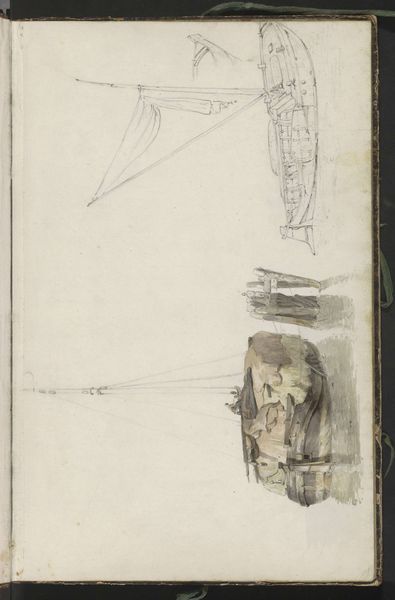
Liggende man in een interieur en een vissersmeisje bij een duin c. 1855 - 1859
0:00
0:00
drawing, paper, pencil
#
portrait
#
drawing
#
dutch-golden-age
#
landscape
#
paper
#
folk-art
#
pencil
#
genre-painting
#
realism
Copyright: Rijks Museum: Open Domain
Curator: Today we’re looking at Jozef Israëls’ drawing, "Liggende man in een interieur en een vissersmeisje bij een duin," made around 1855-1859. It’s currently held at the Rijksmuseum. Editor: The first thing that strikes me is its unfinished, almost ethereal quality. The artist captured two very different scenes using only graphite on paper, both spaces feel isolated. Curator: Exactly, and this dual depiction speaks volumes about the social realities of 19th-century Dutch life. Israëls was deeply invested in portraying the working class, their hardships, and the spaces they inhabited. Note the man indoors, possibly resting after work, and then juxtapose that with the fisher girl alone at the dunes. Editor: I'm drawn to the stark contrast in the application of the pencil. In the upper register the sleeping man is heavily worked creating shadows, textures of perhaps a bed or ground of some sort. But lower down, the quick sketch of the young girl almost fades into the landscape, highlighting vulnerability. Curator: He emphasizes her precarity and solitude but this isn’t simply a picture of individuals; it reflects broader economic disparities, particularly impacting women and their children in fishing communities. The Dutch Golden Age imagery adds layers, harking back to earlier portrayals, but filtered through the lens of Realism. Editor: The Realism movement emphasized honest representation. I think Israëls captures more than that here with such restrained means; it speaks to an experience that goes beyond observable reality. The man’s pose for example is contorted but restful, a study in contrasts. Curator: Precisely. It’s a potent visual statement about class, gender, and labor within a very specific historical moment. These works can engage modern debates around equity, social justice, and representations of working-class experiences. It challenges us to think about these lasting structures, still happening nowadays. Editor: This work demonstrates how simple pencil strokes, attention to contrast and light, and an economy of space are able to render the human condition. It's an impactful sketch with careful material investigation.
Comments
No comments
Be the first to comment and join the conversation on the ultimate creative platform.
